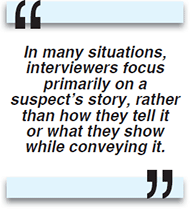
Atavism is a term to describe usually biological attributes which have no modern day function but are still if only partially, present as so-called ‘evolutionary throwbacks’.
These ” traits such as ear wiggling, the appendix, the tail bone and even the ‘goosebump‘ response are all examples of such historical atavistic mechanisms that give us an insight into our past…..
But what about behaviour? To what extent are our current behavioural responses’atavistic’? How much of our ‘instinctual behaviours’ determined from our evolutionary past? The stress response is one of the most researched in terms of the ‘fight or flight‘ response, but how much more of our behaviour is influenced by such factors?

Mammalian Diving Reflex
The mammalian diving reflex allows humans, although more prominently in young children and even babies, to hold their breath underwater for long periods of time (compared to above water). When the face feels cold water (below 21 degrees), there is an involuntary physiological response from the body to reduce oxygen consumption as a survival mechanism. The heart slows, blood flow is reduced to the hands and feet and at even greater depths the lungs are allowed to flood to help equalise pressure to increase survival.

The mammalian diving reflex has caused some to examine the aquatic ape hypothesis, which says that the common ancestors of modern humans spent time adapting to life underwater. The hypothesis is based on the differences between humans and other great apes, and similarities between humans and some aquatic mammals. The theory uses many human functions to support the claims including hair loss, hair location, the subcutaneous fat on babies, the descended larynx, the hooded nose, voluntary breath control, the waxy coating on newborns, and the mammalian diving reflex. http://listverse.com/
The rise of religion in Chimpanzees
Recent footage released of chimps exhibiting what is described as ‘bizarre behaviour’ (throwing rocks at trees), have been used to attempt to explain ritualistic behaviour in early humans that may have developed into religious activity.
“This represents the first record of repeated observations of individual chimpanzees exhibiting stone tool use for a purpose other than extractive foraging at what appear to be targeted trees,” the researchers write in their abstract.
“The ritualised behavioural display and collection of artefacts at particular locations observed in chimpanzee accumulative stone throwing may have implications for the inferences that can be drawn from archaeological stone assemblages and the origins of ritual sites.
Cited from an article in the Independent by Andrew Griffin Friday 4 March 2016
The work of Desmond Morris
Desmond Morris explored questions regarding the evolutionary aspects of humanity and more in his books and documentaries spanning the last decades of the twentieth century.
“Everywhere I go, I’m struck by how similar human beings are to one another in all important respects. Of course, there are many superficial differences and these are often so impressive that we pay too much attention to them and start treating one another as if we belong to different species — with disastrous results. But despite all our variations in costume, ritual and belief, biologically we’re all astonishingly close to one another — a fact that I find very reassuring.” ~ Desmond Morris
Further reading
- The evolution of the human brain.
- Le Page, Michael. “The ancestor within.” New Scientist. 1/13/2007. Vol. 193 Issue 2586, p 28-33.
- Miller, Brandon. “Top 10 Useless Limbs (and Other Vestigial Organs).” LiveScience. http://www.livescience.com/animals/top10_vestigial_organs.html
- Theobald, Douglas. “Part 2: Past History.” 29+ Evidences for Macroevolution. TalkOrigins. http://www.talkorigins.org/faqs/comdesc/section2.html#atavisms
- The Charles Dawin story



 The eyes truly are the window to the soul. However don’t be fooled by so called
The eyes truly are the window to the soul. However don’t be fooled by so called n? Maybe a more fundamental question is are there any universal responses of facial expression or body language? (The eyebrow flash for recognition of someone is thought to be pretty universal as an involuntary response.) Certainly classic research by
n? Maybe a more fundamental question is are there any universal responses of facial expression or body language? (The eyebrow flash for recognition of someone is thought to be pretty universal as an involuntary response.) Certainly classic research by 
